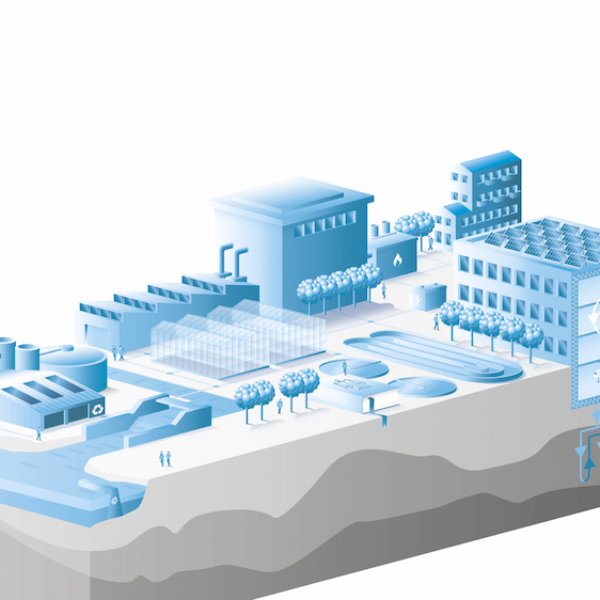GO-e consortium is studying energy flexibility in the built environment

GO-e consortium is studying energy flexibility in the built environment
Witteveen+Bos is part of the new Consortium GO-e (Built Environment Electrification). This consortium is studying whether smart flexibility services can offer an alternative for reinforcing the electricity grid in the built environment. RVO has granted the consortium a subsidy of €5.7 million.
Rising numbers of heat pumps, electric vehicles and solar panels in the built environment have created huge challenges, such as preventing overloading, in the regional (and national) electricity system. However, the growth of these technologies also offers opportunities for the large-scale use of smart flexibility services in the built environment.
Flexibility as an alternative for reinforcement
Flexibility arises when the use or generation of electricity can be varied over time, for example charging electric vehicles at night when there is less pressure on the electricity grid. Heat pumps can also offer flexibility. Flexibility is often mentioned as an alternative for grid reinforcement. To determine how realistic this is, GO-e develops calculation tools and methods to help regional grid operators decide whether, when, where and how flexibility can be used to prevent overloading the electricity grid.
Incentives
Bob Ran is project coordinator at TNO: 'We study what incentives are required to make consumers and businesses willing to accept the introduction of flexibility by the grid operator. GO-e is therefore not only helping to implement the ‘reinforcement unless’ policy of Netbeheer Nederland, but it’s also taking important steps towards achieving a future flexible energy system.’
Casper Hügel on the project and the role of Witteveen+Bos: ‘The explosive increase in solar and wind energy means that the electricity grid is overloaded in many places in the Netherlands. That creates grid congestion. In this consortium, Witteveen+Bos studies and quantifies the potential synergy advantages of grid congestion, power2heat, heat storage and heat networks.’
Flex services
Between April 2021 and April 2024, the GO-e consortium will be developing scalable flex services. This can only be successful if end users participate on a large scale. So, consumers and business energy users are key to the design of flex services and products.
In four living labs, the preferences of end users are therefore included during the design phase of the services. There are three living labs in residential areas in Houten, Heeten and Loenen, where flexibility services are being developed for consumers. The fourth is an Albert Heijn distribution centre, where services are being developed to introduce flexibility for charging electric vehicles.
Consortium
The GO-e consortium is a joint venture involving Alliander, Enexis, Stedin, ElaadNL, Greenchoice, Recoy, Itho Daalderop, ETPA, Technolution, Phase to Phase, DNV GL, Witteveen+Bos, TU Eindhoven and TU Delft, led by TNO. Together with the end users from the living labs, this consortium represents the entire chain of parties which are required to make flexibilisation a success. RVO has granted the consortium a subsidy of €5.7 million in the MOOI regulation of the Energy Top Sector (MOOI: Mission-Driven Research Development and Innovation).
More information?
